- Home
- Arthur C. Clarke
3001: The Final Odyssey Page 18
3001: The Final Odyssey Read online
Page 18
However, there is a bright side to the picture: there may be no other way of averting the next Ice Age, which otherwise is inevitable (“Civilization is an interval between Ice Ages” – Will Durant: The Story of Civilization, Fine Communications, US, 1993)
Even as I write this, many competent engineers, in laboratories all over the world, claim to be tapping this new energy source. Some idea of its magnitude is contained in a famous remark by the physicist Richard Feynman, to the effect that the energy in a coffee-mug's volume (any such volume, anywhere!) is enough to boil all the oceans of the world. This, surely, is a thought to give one pause. By comparison, nuclear energy looks as feeble as a damp match.
And how many supernovae, I wonder, really are industrial accidents?
Chapter 9: Skyland
One of the main problems of getting around in Star City would be caused by the sheer distances involved: if you wanted to visit a friend in the next Tower (and communications will never completely replace contact, despite all advances in Virtual Reality) it could be the equivalent of a trip to the Moon. Even with the fastest elevators this would involve days rather than hours, or else accelerations quite unacceptable to people who had adapted to low-gravity life.
The concept of an “inertialess drive” – i.e. a propulsion system that acts on every atom of a body so that no strains are produced when it accelerates – was probably invented by the master of the “Space Opera”, E.E. Smith, in the 1930s. It is not as improbable as it sounds – because a gravitational field acts in precisely this manner.
If you fall freely near the Earth (neglecting the effects of air resistance) you will increase speed by just under ten meters per second, every second. Yet you will feel weightless – there will be no sense of acceleration, even though your velocity is increasing by one kilometer a second, every minute and a half!
And this would still be true if you were falling in Jupiter's gravity (just over two-and-a-half times Earth's) or even the enormously more powerful field of a white dwarf or neutron star (millions or billions of times greater). You would feel nothing, even if you had approached the velocity of light from a standing start in a matter of minutes. However, if you were foolish enough to get within a few radii of the attracting object, its field would no longer be uniform over the whole length of your body, and tidal forces would soon tear you to pieces. For further details, see my deplorable but accurately-titled short story “Neutron Tide” (in The Wind from the Sun).
An “inertialess drive”, which would act exactly like a controllable gravity field, had never been discussed seriously outside the pages of science fiction until very recently. But in 1994 three American physicists did exactly this, developing some ideas of the great Russian physicist Andrei Sakharov.
“Inertia as a Zero-Point Field Lorentz Force” by B. Haisch, A. Rueda & H. F. Puthoff (Physics Review A, February 1994) may one day be regarded as a landmark paper, and for the purposes of fiction I have made it so. It addresses a problem so fundamental that it is normally taken for granted, with a “That's just the way the universe is made shrug” of the shoulders.
The question HR&P asked is: “What gives an object mass (or inertia) so that it requires an effort to start it moving, and exactly the same effort to restore it to its original state?”
Their provisional answer depends on the astonishing – and outside the physicists' ivory towers – little-known fact that so-called “empty” space is actually a cauldron of seething energies – the Zero-Point Field (see note above). HR&P suggest that both inertia and gravitation are electromagnetic phenomena, resulting from interaction with this field.
There have been countless attempts, going all the way back to Faraday, to link gravity and magnetism, and although many experimenters have claimed success, none of their results has ever been verified. However, if HR&P's theory can be proved, it opens up the prospect – however remote – of anti-gravity, “space drives” and the even more fantastic possibility of controlling inertia. This could lead to some interesting situations: if you gave someone the gentlest touch, they would promptly disappear at thousands of kilometers an hour, until they bounced off the other side of the room a fraction of a millisecond later. The good news is that traffic accidents would be virtually impossible; automobiles – and passengers – could collide harmlessly at any speed.
(And you think that today's life-styles are already too hectic?)
The “weightlessness” which we now take for granted in space missions – and which millions of tourists will be enjoying in the next century – would have seemed like magic to our grandparents. But the abolition – or merely the reduction – of inertia is quite another matter, and may be completely impossible.* But it's a nice thought, for it could provide the equivalent of “teleportation”: you could travel anywhere (at least on Earth) almost instantaneously. Frankly, I don't know how “Star City” could manage without it...
* * *
As every Trekker knows, the Starship Enterprise uses “inertial dampers” to solve this particular problem. When asked how these work, the series' technical advisor gave the only possible answer: “very well, thank you.” (See The Physics of Star Trek by Lawrence Krauss: HarperCollins, 1996.)
* * *
One of the assumptions I have made in this novel is that Einstein is correct, and that no signal – or object – can exceed the speed of light. A number of highly mathematical papers have recently appeared suggesting that, as countless science-fiction writers have taken for granted, galactic hitch-hikers may not have to suffer this annoying disability.
On the whole, I hope they are right – but there seems one fundamental objection. If FTL is possible, where are all those hitchhikers – or at least the well-heeled tourists?
One answer is that no sensible ETs will ever build interstellar vehicles, for precisely the same reason that we have never developed coal-fuelled airships: there are much better ways of doing the job.
The surprisingly small number of “bits” required to define a human being, or to store all the information one could possibly acquire in a lifetime, is discussed in Machine Intelligence, the Cost of Interstellar Travel and Fermi's Paradox by Louis K. Scheffer (Quarterly Journal of the Royal Astronomical Society, Vol. 35, No. 2, June 1994: pp. 157-75). This paper (surely the most mind-stretching that the staid QJRAS has published in its entire career!) estimates that the total mental state of a 100-year-old human with a perfect memory could be represented by 10 to the 15th bits (one petabit). Even today's optical fibers could transmit this amount of information in a matter of minutes.
My suggestion that a Star Trek transporter would still be unavailable in 3001 may therefore appear ludicrously shortsighted a mere century from now* and the present lack of interstellar tourists is simply due to the fact that no receiving equipment has yet been set up on Earth. Perhaps it's already on its way by slow-boat...
* * *
However, for a diametrically opposing view, see the above-mentioned Physics of Star Trek.
* * *
Chapter 15: Falcon
It gives me particular pleasure to pay this tribute to the crew of Apollo 15. On their return from the Moon they sent me the beautiful relief map of Falcon's landing site, which now has pride of place in my office. It shows the routes taken by the Lunar Rover during its three excursions, one of which skirted Earthlight Crater. The map bears the inscription: “To Arthur Clarke from the crew of Apollo 15 with many thanks for your visions of space. Dave Scott, Al Worden, Jim Irwin.” In return, I have now dedicated Earthlight (which, written in 1953, was set in the territory the Rover was to drive over in 1971): “To Dave Scott and Jim Irwin, the first men to enter this land, and to Al Worden, who watched over them from orbit.”
After covering the Apollo 15 landing in the CBS studio with Walter Cronkite and Wally Schirra, I flew to Mission Control to watch the re-entry and splashdown. I was sitting beside Al Worden's little daughter when she was the first to notice that one of the capsule's three parachutes h
ad failed to deploy. It was a tense moment, but luckily the remaining two were quite adequate for the job.
Chapter 16: Asteroid 7794
See Chapter 18 of 2001: A Space Odyssey for the description of the probe's impact. Precisely such an experiment is now being planned for the forthcoming Clementine 2 mission.
I am a little embarrassed to see that in my first Space Odyssey the discovery of Asteroid 7794 was attributed to the Lunar Observatory – in 1997! Well, I'll move it to 2017 – in time for my 100th birthday.
Just a few hours after writing the above, I was delighted to learn that Asteroid 4923 (1981 EO27), discovered by S. J. Bus at Siding Spring, Australia, on 2 March 1981, has been named Clarke, partly in recognition of Project Spaceguard (see Rendezvous with Rama and The Hammer of God). I was informed, with profound apologies, that owing to an unfortunate oversight Number 2001 was no longer available, having been allocated to somebody named A. Einstein. Excuses, excuses.
But I was very pleased to learn that Asteroid 5020, discovered on the same day as 4923, has been named Asimov – though saddened by the fact that my old friend could never know.
Chapter 17: Ganymede
As explained in the Valediction, and in the “Author's Notes” to 2010 Odyssey Two and 2061 Odyssey Three, I had hoped that the ambitious Galileo Mission to Jupiter and its moons would by now have given us much more detailed knowledge – as well as stunning close-ups – of these strange worlds.
Well, after many delays, Galileo reached its first objective – Jupiter itself – and is performing admirably. But, alas, there is a problem – for some reason, the main antenna never unfolded. This means that images have to be sent back via a low-gain antenna, at an agonizingly slow rate. Although miracles of onboard computer reprogramming have been done to compensate for this, it will still require hours to receive information that should have been sent in minutes.
So we must be patient – and I was in the tantalizing position of exploring Ganymede in fiction just before Galileo started to do so in reality, on 27 June 1996.
On 11 July 1996, just two days before finishing this book, I downloaded the first images from JPL; luckily nothing – so far! – contradicts my descriptions. But if the current vistas of cratered ice-fields suddenly give way to palm trees and tropical beaches – or, worse still, YANKEE GO HOME signs, I'll be in real trouble .
I am particularly looking forward to close-ups of “Ganymede City“ (Chapter 17). This striking formation is exactly as I described it – though I hesitated to do so for fear that my “discovery” might be front-paged by the National Prevaricator. To my eyes it appears considerably more artificial than the notorious “Mars Face” and its surroundings. And if its streets and avenues are ten kilometers wide – so what? Perhaps the Medes were BIG...
The city will be found on the NASA Voyager images 20637.02 and 20637.29, or more conveniently in Figure 23.8 of John H. Rogers's monumental The Giant Planet Jupiter (Cambridge University Press, 1995).
Chapter 19: The Madness of Mankind
For visual evidence supporting Khan's startling assertion that most of mankind has been at least partially insane, see Episode 22, “Meeting Mary”, in my television series Arthur C. Clarke's Mysterious Universe. And bear in mind that Christians represent only a very small subset of our species: far greater numbers of devotees than have ever worshipped the Virgin Mary have given equal reverence to such totally incompatible divinities as Rama, Kali, Siva, Thor, Wotan, Jupiter, Osiris, etc. etc....
The most striking – and pitiful – example of a brilliant man whose beliefs turned him into a raving lunatic is that of Conan Doyle. Despite endless exposures of his favorite psychics as frauds, his faith in them remained unshaken. And the creator of Sherlock Holmes even tried to convince the great magician Harry Houdini that he “dematerialized” himself to perform his feats of escapology – often based on tricks which, as Dr Watson was fond of saying, were “absurdly simple”. (See the essay “The Irrelevance of Conan Doyle” in Martin Gardner's The Night is Large, St Martin's Press, US, 1996.)
For details of the Inquisition, whose pious atrocities make Pol Pot look positively benign, see Carl Sagan's devastating attack on New Age Nitwittery, The Demon-Haunted World: Science as a Candle in the Dark (Headline, 1995). I wish it – and Martin's book – could be made required reading in every high school and college.
At least the US Department of Immigration has taken action against one religion-inspired barbarity. Time Magazine (“Milestones”, 24 June 1996) reports that asylum must now be granted to girls threatened with genital mutilation in their countries of origin.
I had already written this chapter when I came across Anthony Storr's Feet of Clay: A Study of Gurus (HarperCollins, 1996), which is a virtual textbook on this depressing subject. It is hard to believe that one holy fraud, by the time the US Marshals belatedly arrested him, had accumulated ninety-three Rolls-Royces! Even worse – eighty-three per cent of his thousands of American dupes had been to college, and thus qualify for my favorite definition of an intellectual: “Someone who has been educated beyond his/her intelligence.”
Chapter 26: Tsienville
In the 1982 preface to 2010: Odyssey Two, I explained why I named the Chinese spaceship which landed on Europa after Dr Tsien Hsue-shen, one of the founders of the United States and Chinese rocket programmers. As Iris Chang states in her biography Thread of the Silkworm (Basic Books, 1995) “his life is one of the supreme ironies of the Cold War”.
Born in 1911, Tsien won a scholarship which brought him from China to the United States in 1935, where he became student and later colleague of the brilliant Hungarian aerodynamicist Theodore von Karman. Later, as first Goddard Professor at the California Institute of Technology, he helped establish the Guggenheim Aeronautical Laboratory – the direct ancestor of Pasadena's famed Jet Propulsion Laboratory.
With top secret clearance, he contributed greatly to American rocket research in the 1950s, but during the hysteria of the McCarthy era was arrested on trumped-up security charges when he attempted to pay a visit to his native China. After many hearings and a prolonged period of arrest, he was finally deported to his homeland – with all his unrivalled knowledge and expertise. As many of his distinguished colleagues affirmed, it was one of the most stupid (as well as most disgraceful) things the United States ever did.
After his expulsion, according to Thuang Fenggan, Deputy Director, China National Space Administration, Tsien “started the rocket business from nothing... Without him, China would have suffered a twenty-year lag in technology.” And a corresponding delay, perhaps, in the deployment of the deadly “Silkworm” anti-ship missile and the “Long March” satellite launcher.
Shortly after I had completed this novel, the International Academy of Astronautics honored me with its highest distinction, the von Karman Award – to be given in Beijing! This was an offer I couldn't refuse, especially when I learned that Dr Tsien is now a resident of that city. Unfortunately, when I arrived there I discovered that he was in hospital for observation, and his doctors would not permit visitors.
I am therefore extremely grateful to his personal assistant, Major-General Wang Shouyun, for carrying suitably inscribed copies of 2010 and 2061 to Dr Tsien. In return the General presented me with the massive volume he has edited, Collected Works of H. S. Tsien: 1938-1956 (1991, Science Press, 16, Donghuangcheggen North Street, Beijing 100707). It is a fascinating collection, beginning with numerous collaborations with von Karman on problems in aerodynamics, and ending with solo papers on rockets and satellites. The very last entry, “Thermonuclear Power Plants” (Jet Propulsion, July 1956) was written while Dr Tsien was still a virtual prisoner of the FBI, and deals with a subject that is even more topical today – though very little progress has been made towards 'a power station utilizing the deuterium fusion reaction'.
Just before I left Beijing on 13 October 1996 I was happy to learn that, despite his current age (85) and disability, Dr Tsien is still pursuing his scientifi
c studies. I sincerely hope that he enjoyed 2010 and 2061, and look forward to sending him this "Final Odyssey" as an additional tribute.
Chapter 36: Chamber of Horrors
As the result of a series of Senate Hearings on Computer Security in June 1996, on 15 July 1996 President Clinton signed Executive Order 13010 to deal with “computer-based attacks on the information or communications components that control critical infrastructures ('cyber threats').“ This will set up a task force to counter cyberterrorism, and will have representatives from the CIA, NSA, defense agencies, etc.
Pico, here we come...
Since writing the above paragraph, I have been intrigued to learn that the finale of the movie Independence Day, which I have not yet seen, also involves the use of computer viruses as Trojan horses! I am also informed that its opening is identical to that of Childhood's End (1953), and that it contains every known science-fiction cliché since Melies' Trip to the Moon (1903).
I cannot decide whether to congratulate the script-writers on their one stroke of originality – or to accuse them of the transtemporal crime of pre-cognitive plagiarism. In any event, I fear there's nothing I can do to stop John Q. Popcorn thinking that I have ripped off the ending of ID4.

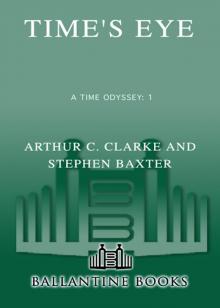 Time's Eye
Time's Eye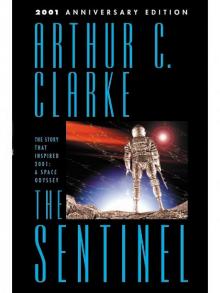 The Sentinel
The Sentinel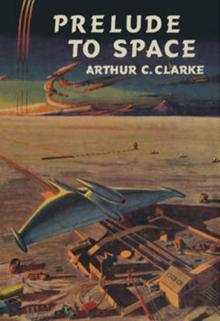 Prelude to Space
Prelude to Space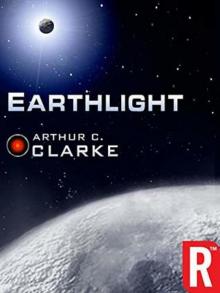 Earthlight (Arthur C. Clarke Collection)
Earthlight (Arthur C. Clarke Collection)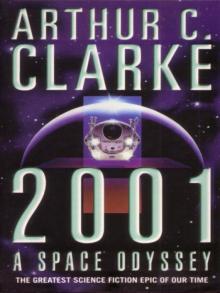 2001: A Space Odyssey
2001: A Space Odyssey Against the Fall of Night
Against the Fall of Night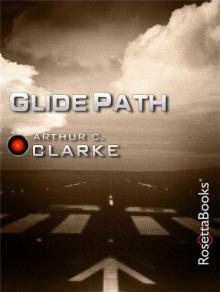 Glide Path
Glide Path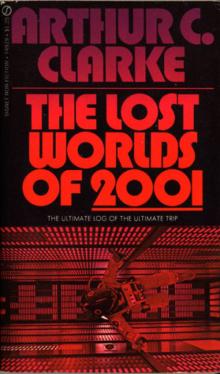 The Lost Worlds of 2001
The Lost Worlds of 2001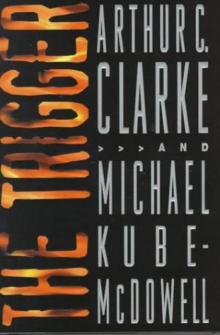 The Trigger
The Trigger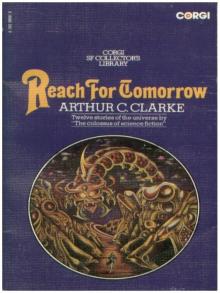 Reach for Tomorrow
Reach for Tomorrow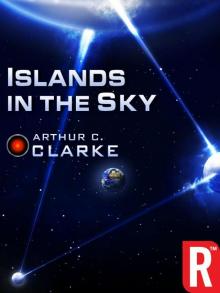 Islands in the Sky
Islands in the Sky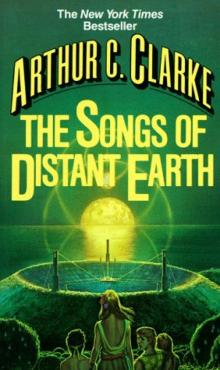 The Songs of Distant Earth
The Songs of Distant Earth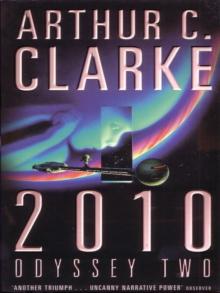 2010: Odyssey Two
2010: Odyssey Two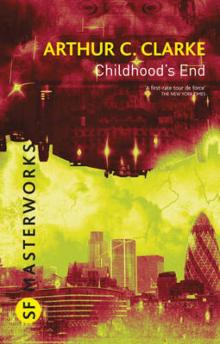 Childhood's End
Childhood's End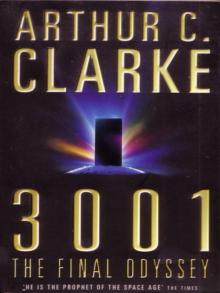 3001: The Final Odyssey
3001: The Final Odyssey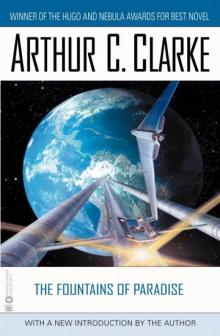 The Fountains of Paradise
The Fountains of Paradise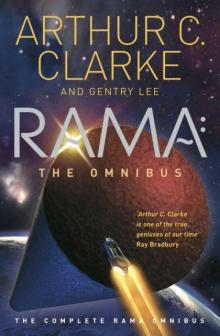 Rama: The Omnibus
Rama: The Omnibus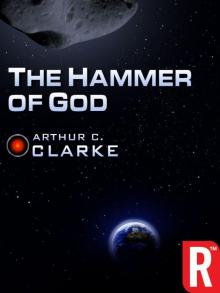 The Hammer of God
The Hammer of God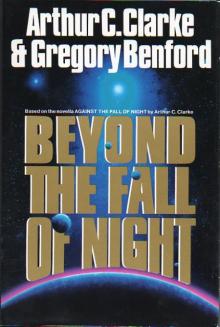 Beyond the Fall of Night
Beyond the Fall of Night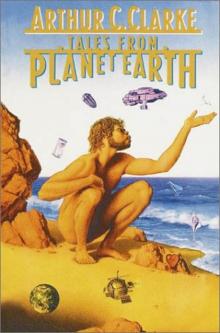 Tales From Planet Earth
Tales From Planet Earth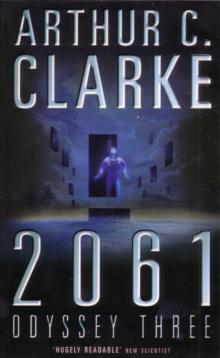 2061: Odyssey Three
2061: Odyssey Three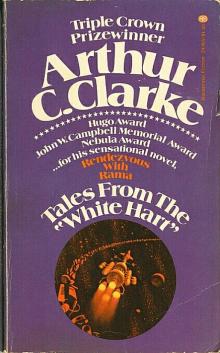 Tales From the White Hart
Tales From the White Hart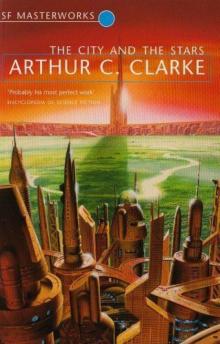 The City and the Stars/The Sands of Mars
The City and the Stars/The Sands of Mars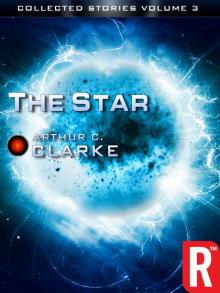 The Star
The Star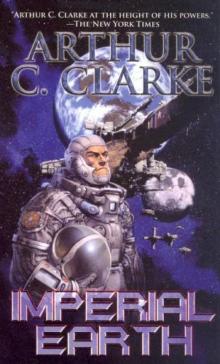 Imperial Earth
Imperial Earth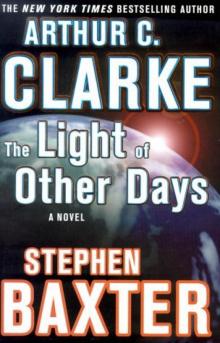 The Light of Other Days
The Light of Other Days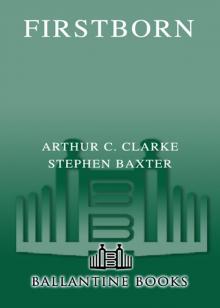 Firstborn
Firstborn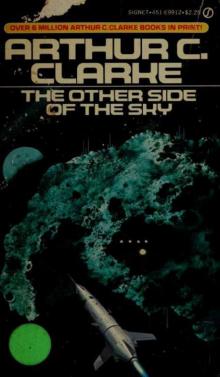 The Other Side of the Sky
The Other Side of the Sky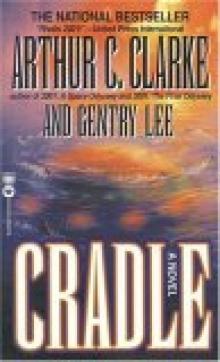 Cradle
Cradle The Wind From the Sun
The Wind From the Sun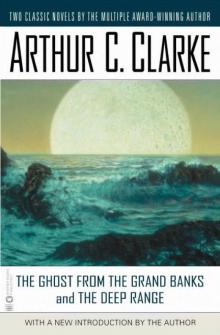 The Ghost From the Grand Banks and the Deep Range
The Ghost From the Grand Banks and the Deep Range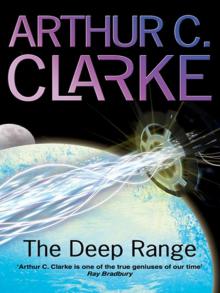 The Deep Range
The Deep Range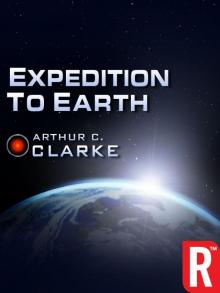 Expedition to Earth
Expedition to Earth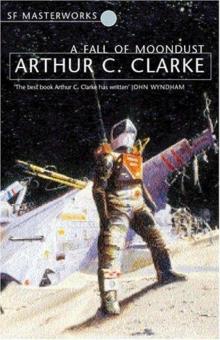 A Fall of Moondust
A Fall of Moondust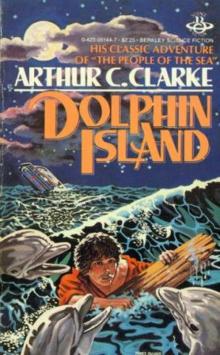 Dolphin Island (Arthur C. Clarke Collection)
Dolphin Island (Arthur C. Clarke Collection)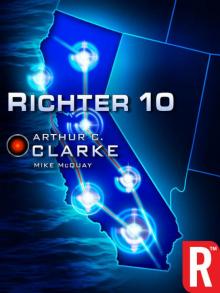 Richter 10
Richter 10 The City and the Stars
The City and the Stars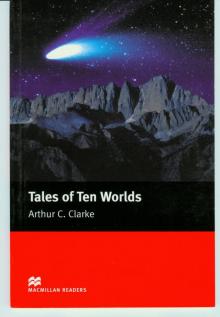 Tales of Ten Worlds
Tales of Ten Worlds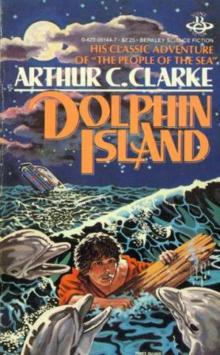 Dolphin Island
Dolphin Island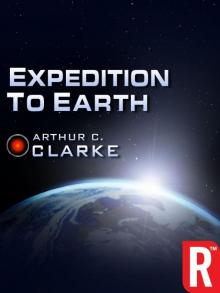 Expedition to Earth (Arthur C. Clarke Collection: Short Stories)
Expedition to Earth (Arthur C. Clarke Collection: Short Stories)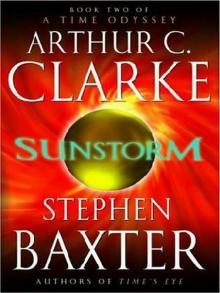 Sunstorm
Sunstorm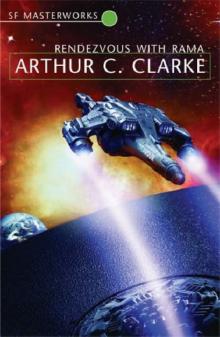 Rendezvous with Rama
Rendezvous with Rama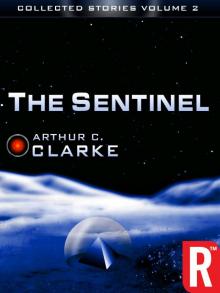 The Collected Stories of Arthur C. Clarke
The Collected Stories of Arthur C. Clarke Trouble with the Natives
Trouble with the Natives Rama Revealed r-4
Rama Revealed r-4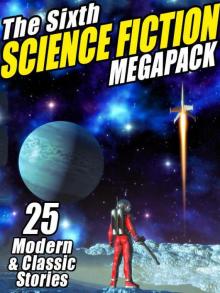 The Sixth Science Fiction Megapack
The Sixth Science Fiction Megapack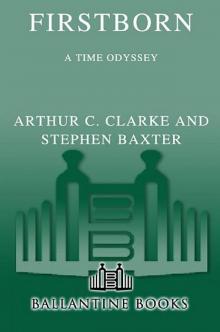 Firstborn to-3
Firstborn to-3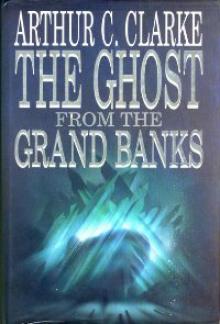 The Ghost from the Grand Banks
The Ghost from the Grand Banks Into the Comet
Into the Comet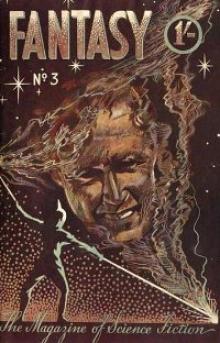 The Fires Within
The Fires Within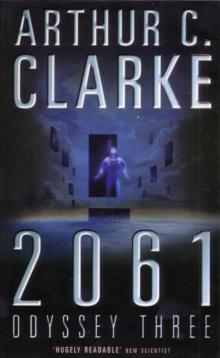 2061: Odyssey 3
2061: Odyssey 3 The Ninth Science Fiction Megapack
The Ninth Science Fiction Megapack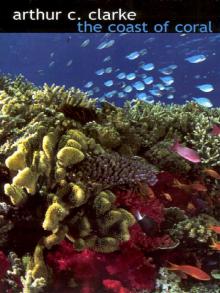 The Coast of Coral
The Coast of Coral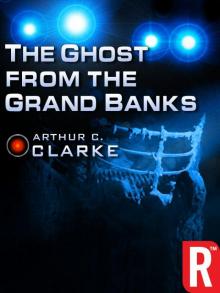 The Ghost from the Grand Banks (Arthur C. Clarke Collection)
The Ghost from the Grand Banks (Arthur C. Clarke Collection) The Space Trilogy
The Space Trilogy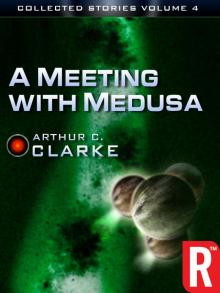 A Meeting With Medusa
A Meeting With Medusa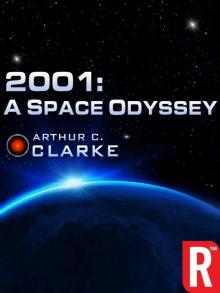 2001: A Space Odyssey (Arthur C. Clarke Collection: The Odyssey)
2001: A Space Odyssey (Arthur C. Clarke Collection: The Odyssey)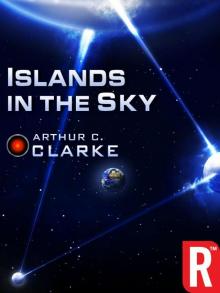 Islands in the Sky (Arthur C. Clarke Collection)
Islands in the Sky (Arthur C. Clarke Collection)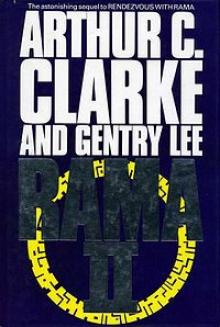 Rama II r-2
Rama II r-2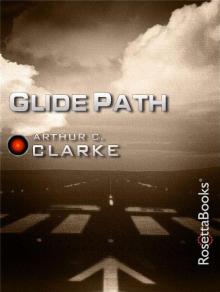 Glide Path (Arthur C. Clarke Collection)
Glide Path (Arthur C. Clarke Collection)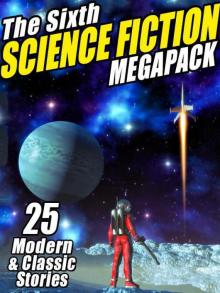 The Sixth Science Fiction Megapack: 25 Classic and Modern Science Fiction Stories
The Sixth Science Fiction Megapack: 25 Classic and Modern Science Fiction Stories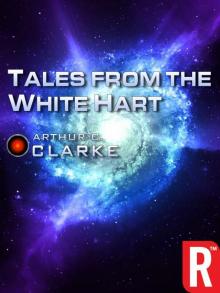 Tales from the White Hart (Arthur C. Clarke Collection: Short Stories)
Tales from the White Hart (Arthur C. Clarke Collection: Short Stories) The Reluctant Orchid
The Reluctant Orchid